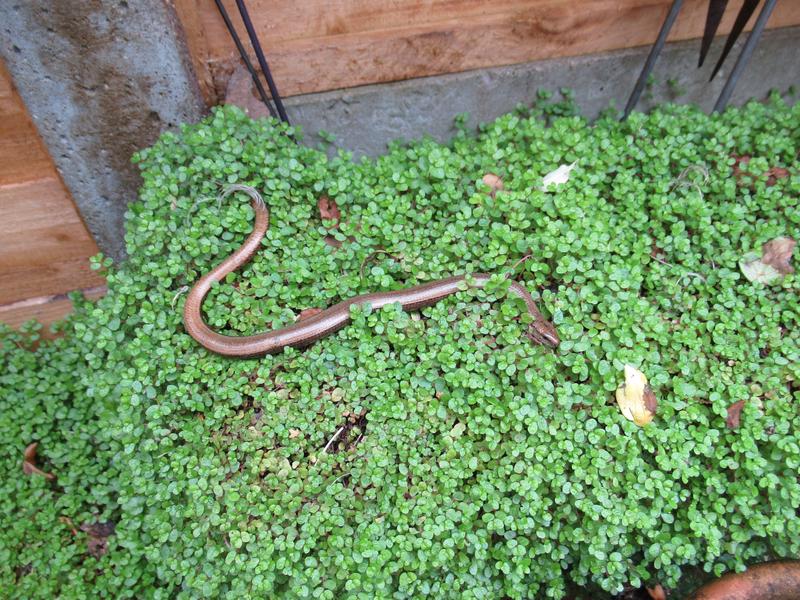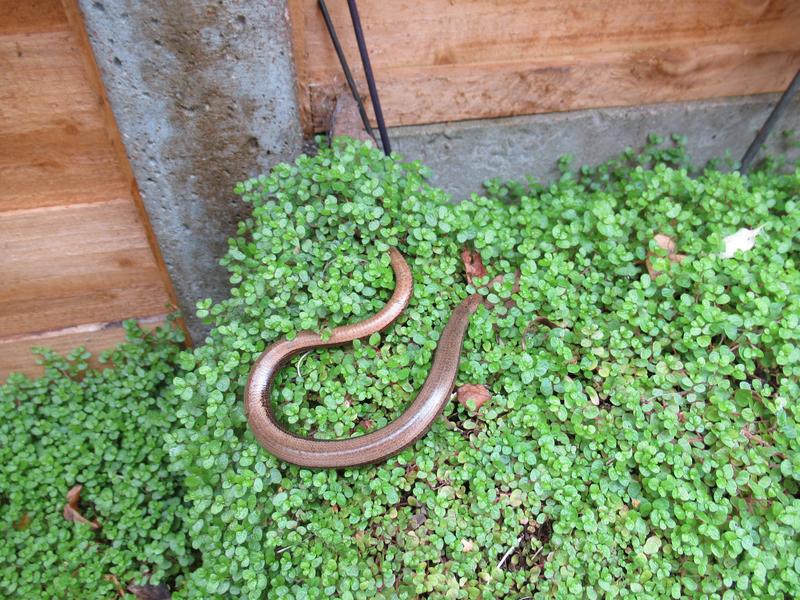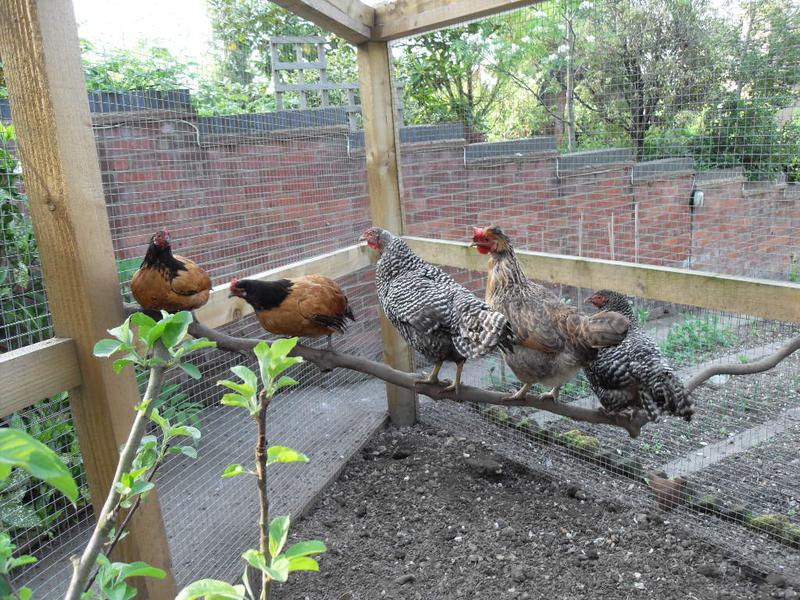We have had slow worms breeding in our garden for many years now. We know they are breeding here because we have spotted really, tiny, baby, ones and medium sized ones and some that are the optimum size that they grow too.
Last month when next door’s tree was being cut back, one of the guys found a baby one on our path. I took a photo but it came out blurred. Yesterday I saw a much bigger one in the greenery at the side of the path. I wonder if it is one of the baby ones, now grown up, or another one entirely.
I love having these beautiful creatures in our garden.



 Click here to see the history of my flock.
Click here to see the history of my flock.
Wow it looks quite big. Do you have a compost heap? They like them!
We just have a compost bin but the slow worms are always in the undergrowth of the garden. I did a post last year showing an adult one against a ruler and it was eleven inches long which is as big as they get. The baby ones we have seen are matchstick width and less length than my little finger.
I love them too.
I always have. Do you remember me keeping them as pets as a kid in a box and digging for worms for them until they escaped?
I have seen these before and could never figure out what they were called.
They look like little snakes but worms mixed.
they have them allot down south and in the south west.
They look like snakes but they are actually legless lizards and completely harmless. They eat worms and smaller bugs. They used to be common but have become rarer over recent years so it’s good to see them thriving. We are in the South East and until we moved to this house eleven years I had not seen them for many years. We have a good breeding colony in our garden which is pleasing.
I have never seen these before. Really cool…off to do some googling!
It’s odd because as a child we always had them in the garden and I was used to picking them up and bringing them indoors and I learned all about them. It was only as an adult that I learned they had become more scarce probably because habitats have changed. Then in recent years I have become reacquainted with them as they have been breeding in our garden and every spring we see babies then throughout the summer we see bigger and bigger ones. I am just pleased that having known them from childhood I am now lucky enough to have them in my garden again.